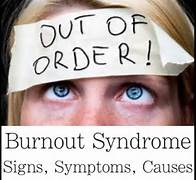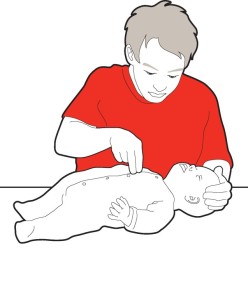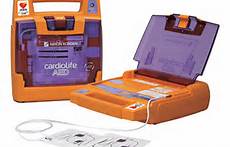Author:
|
Back to Blog
Talk to a healthcare professional if you or a family member have any of the potential signs of heart failure, such as shortness of breath, persistent coughing or wheezing, Buildup of excess fluid in body tissues (edema), fatigue, lack of appetite or nausea, impaired thinking, or an increased heart rate. Learn more about conditions that may cause heart failure.Learn about some of the common tests for heart failure.Learn more about ejection fraction heart failure measurement.
Your doctor will order tests and procedures to help determine the nature of the problem with the heart's larger lower chambers, the ventricles. These chambers may have lost some of their power to pump blood to the body or relax and fill with blood. The doctor uses your test results to determine whether you have heart failure, the degree of severity, and what treatments would be most effective. For a CPR class give us a call (503)538-2610
0 Comments
Read More
Back to Blog
Lifestyle Changes For Health Heart2/26/2014 Following recommendations about diet, exercise and other habits can help to alleviate symptoms, slow your disease's progression and improve your everyday life. In fact, people with mild to moderate heart failure often can lead nearly normal lives as a result.
You or your loved ones may have to change your regular routine by...Quitting smokingLosing or maintaining your weightTracking your daily fluid intakeAvoiding alcoholAvoiding or limiting caffeineEating a heart-healthy dietBeing physically activeManaging stressKeeping trackMonitoring your blood pressureGetting adequate restDeveloping supportAvoiding flu and pneumonia with vaccinationsFollowing heart patient guidelines for sexual activitySelecting appropriate clothing www.cprnorthwest.com 503-538-2610
Back to Blog
Staying Active with Your Pet2/23/2014  Not only is physical activity important for you and your family, but it is important for your pet too. Try these ideas for participating in physical activity together: Go on a family picnic and bring your dog. Pack some healthy snacks like fruit, veggie sticks, mixed nuts, and plenty of water (including a bowl for your dog to drink!). Bring some fun toys like a Frisbee or ball and play a game of catch with your kids and your pet. Cool off when it is hot by taking a run through the sprinklers. Put the kids in their swim trunks (don’t forget the SPF!) and run around with your pet in the water. Be sure to have a lot of drinking water available to stay hydrated. Go to the open water. If you live near a beach or a lake find a location that is pet-friendly and bring them along for a day in the sun with your kids. Don’t forget the sunscreen and water! Participate in local walks. Find local fundraising walks or fun runs that are animal-friendly and bring the whole family. You will be exercising, spending time together, and supporting a great cause. Visit a dog park. If your dog gets along well with other dogs, find a local dog park to visit for an afternoon. You and your kids can take turns playing fetch, tug-of-war, and running around with your pet. Walk home from school. If your child walks home from school, bring the dog when you meet them at school and walk home together. You can also walk together in the morning on the way to school or with a spouse or family member who walks to or from work. Incorporate one or two of these tips a week and your family and your pet will thank you! (503)538-2610 www.cprnorthwest.com
Back to Blog
Nurse Burn Out2/21/2014  I read this article the other day from NBCNews.com on how burned-out nurses are linked to more infections in patients and it broke my heart. It wasn’t the statistics or the research that were found, although those numbers are staggering as well. What made me sad was the fact that nurses all over the country are getting so burnt out taking care of US. They love on people they don’t even know, complete strangers, whom they will probably never see again. But, when they come home, they are EXHAUSTED. They may not have been able to eat at ALL during a 13 or 14 hour shift. They may not have gone to the bathroom their whole shift just to make sure that YOU were able to go as many times as you needed… I want to honor and CELEBRATE the nurses in our community. Food for thought: What if each community took a day to honor the nurses, doctors, EMTs, medical professionals, etc., who work tirelessly to serve us and take care of us without asking for anything in return? Will you join me?…will you join us, CPR Northwest in celebrating the wonderful work that these men and women all over the country do each and every day, 24 hrs a day? What are some ways that YOU can show how grateful you are for the medical professionals in YOUR life?…How have medical professionals impacted you?…maybe even saved your life?
Back to Blog
Danger of shock2/18/2014 Shock left untreated can lead to permanent organ damage or death. Shock is a lack of oxygen getting to our vital organs and body tissues, which means there is a lack of oxygen in our blood.
Shock is usually from the results of a trauma, heatstroke, spinal injury, blood loss, an allergic reaction, severe infection, poisoning or severe burns. A person in shock can be conscious or unconscious. Signs of a person in shock are:
heart to move blood around the body. Keep the victim warm by covering them with a blanket or coat. If in a hot environment, it would be best not to over heat, try and maintain a normal body temperature, by possibly shading the victim. If no signs of spinal of leg injuries exist, lift the legs of the victim about 8 to 10 inches. With no vital organ in your legs we will use gravity to force more of the oxygen depleted blood, into the core of the body, where we do have vital organs. Continue to monitor the victims condition especially that they continue breathing until help arrives. *Caution: DO NOT have a person lay down flat if they are experiencing signs or symptoms of a heart attack. It would be better to get them into a reclining position or a position the victim finds comfortable. To learn more about shock you can take a CPR or first aid class (503)538-2610 www.cprnorthwest.com
Back to Blog
Warning Signs of Heart Failure2/14/2014 By themselves, any one sign of heart failure may not be cause for alarm. But if you have more than one of these symptoms, even if you haven't been diagnosed with any heart problems, report them to a healthcare professional and ask for an evaluation of your heart. If you have been diagnosed with heart failure, it's important for you to keep track of symptoms and report any sudden changes to your healthcare team.
This table lists the most common signs and symptoms, explains why they occur and describes how to recognize them. Watch our interactive heart failure signs and symptoms animation. Sign or Symptom People with Heart Failure May Experience... Why It Happens Shortness of breath (also called dyspnea) ...breathlessness during activity (most commonly), at rest, or while sleeping, which may come on suddenly and wake you up. You often have difficulty breathing while lying flat and may need to prop up the upper body and head on two pillows. You often complain of waking up tired or feeling anxious and restless. Blood "backs up" in the pulmonary veins (the vessels that return blood from the lungs to the heart) because the heart can't keep up with the supply. This causes fluid to leak into the lungs. Persistent coughing or wheezing ...coughing that produces white or pink blood-tinged mucus. Fluid builds up in the lungs (see above). Buildup of excess fluid in body tissues (edema) ...swelling in the feet, ankles, legs or abdomen or weight gain. You may find that your shoes feel tight. As blood flow out of the heart slows, blood returning to the heart through the veins backs up, causing fluid to build up in the tissues. The kidneys are less able to dispose of sodium and water, also causing fluid retention in the tissues. Tiredness, fatigue ...a tired feeling all the time and difficulty with everyday activities, such as shopping, climbing stairs, carrying groceries or walking. The heart can't pump enough blood to meet the needs of body tissues. The body diverts blood away from less vital organs, particularly muscles in the limbs, and sends it to the heart and brain. Lack of appetite, nausea ...a feeling of being full or sick to your stomach. The digestive system receives less blood, causing problems with digestion. Confusion, impaired thinking ...memory loss and feelings of disorientation. A caregiver or relative may notice this first. Changing levels of certain substances in the blood, such as sodium, can cause confusion. Increased heart rate ...heart palpitations, which feel like your heart is racing or throbbing. To "make up for" the loss in pumping capacity, the heart beats faster.
Back to Blog
How to perform CPR on a baby2/10/2014  How to perform CPR on a baby By Rick Knowing how to perform CPR on a baby is an essential first aid skill. There are lots of reasons why a baby might stop breathing including respiratory diseases (asthma etc.), choking on foreign objects or food or sudden infant death syndrome. Therefore its important for everyone to know how to perform CPR on a baby. The principles of delivering CPR are the same for babies as they are for adults. We need to deliver effective chest compressions and rescue breaths to keep oxygenated blood moving around the body before the arrival of advanced medical help or a defibrillator. However there are a few key differences which you should know about: 1) Never shake a baby to check for a response. Instead you can gently flick or tap the bottom of their foot 2) Do not tilt the head back forcefully to open the baby’s airway. This can actually close off the airway or cause further injuries. Instead you should bring the head into the neutral position 3) When delivering chest compressions you should only use two fingers in the center of the baby’s chest 4) When delivering rescue breaths you only need to use a ‘puff‘ of air (as much as is in your cheeks). Rescue breaths on a baby should be delivered by placing your mouth over the baby’s nose and mouth. If you would like to learn CPR and Need a class give us a call at (503) 538-2610
Back to Blog
Compression Only CPR2/5/2014 There has been a recent media push regarding a concept introduced by the American Heart Association called, “Compression Only CPR.” This means that bystanders who volunteer to assist someone who is unresponsive and not breathing should begin chest compressions and continue chest compressions without breathing for the victim.
I understand the concept, as for many lay rescuers who have not taken a CPR class or do not want to place their mouth on the mouth of an unknown individual, compression only CPR is a good alternative. However, one key element with Compression Only CPR is that it is most effective when performed on ‘witnessed’ arrests (where the patient goes down in front of the rescuers). This is because research shows in sudden cardiac arrest there is still ample oxygen in the lungs and blood, and immediate chest compressions will keep that oxygenated blood flowing to the heart and other vital organs. What happens to the victim of a cardiac arrest which was not witnessed and the amount of time passed is unknown? This circumstance is not addressed with Compression Only CPR guidelines. Concrete evidence shows tissue damage begins after 4 minutes to a brain without oxygen, and after 10 minutes of no oxygen, significant brain death has occurred. For a witnessed arrest, once the oxygen in the body has been depleted, what then? Firefighters and ambulance personnel have barriers to protect themselves when providing rescue breaths. However, the basic lay rescuer may not have a personal barrier with them in the event of an emergency. I encourage all individuals both professional and lay responders trained in CPR to carry personal protective barriers. They can be found on many sites but one of my favorites is the Microshield Key. It is a CPR barrier on a key chain because I always have my keys with me when I am not at home. Be prepared and stay safe! To take a CPR Class or for more information call (503) 538-2610 or www.cprnorhtwest.com
Back to Blog
 American Heart Association CPR courses train rescuers to use an AED. The acronym “AED” stands for “Automated External Defibrillator.” An AED is used in conjunction with CPR, and it can increase the chances of survival when it is used very soon after cardiac arrest. Timing is important because the sooner the AED is used the better the chances of survival. The first thing the CPR rescuer does with an AED is turn it on. Once the AED is turned on it will detect the heart’s rhythm and determine whether the rhythm is “shockable” or “non-shockable.” If the rhythm is shockable then the AED will advise the CPR rescuer to stand clear while the AED charges. The AED then will tell the CPR rescuer to push the shock button. When the CPR rescuer pushes the shock button the standard adult AED administers 360 joules to the heart. The best case scenario is that the shock puts the heart back into a regular rhythm. After the shock, the AED will advise the rescuer to immediately resume CPR, starting with compressions. At that point the rescuer will continue to administer CPR while the AED keeps track of the time. After 2 minutes the AED will advise the rescuer to stop CPR and stand clear. The AED will then re-analyze the heart’s rhythm and the entire process will begin again. In the BLS Healthcare Provider American Heart Association CPR courses, the resucers are instructed to switch rescuers after every 5 sets of compressions. When the AED is available, CPR rescuers are instructed to switch every time the AED re-analyzes, which should be roughly 5 cycles. To learn more about AED or CPR give us a call (503) 538-2610 or www.cprnorthwest.com/
Back to Blog
Four Ways to Deal With Stress2/1/2014 Self-talk is one way to deal with stress. We all talk to ourselves; sometimes we talk out loud but usually we keep self-talk in our heads. Self-talk can be positive ("I can do this" or "Things will work out") or negative ("I'll never get well" or "I'm so stupid").
Negative self-talk increases stress. Positive self-talk helps you calm down and control stress. With practice, you can learn to turn negative thoughts into positive ones. For example: Negative Positive "I can't do this." "I'll do the best I can." "Everything is going wrong." "I can handle things if I take one step at a time." "I hate it when this happens." "I know how to deal with this; I've done it before." To help you feel better, practice positive self-talk every day — in the car, at your desk, before you go to bed or whenever you notice negative thoughts. Having trouble getting started? Try positive statements such as these:
Emergency Stress Stoppers There are many stressful situations — at work, at home, on the road and in public places. We may feel stress because of poor communication, too much work and everyday hassles like standing in line. Emergency stress stoppers help you deal with stress on the spot. Try these emergency stress stoppers. You may need different stress stoppers for different situations and sometimes it helps to combine them.
. Finding Pleasure When stress makes you feel bad, do something that makes you feel good. Doing things you enjoy is a natural way to fight off stress. You don't have to do a lot to find pleasure. Even if you're ill or down, you can find pleasure in simple things such as going for a drive, chatting with a friend or reading a good book. Try to do at least one thing every day that you enjoy, even if you only do it for 15 minutes.
Daily Relaxation Relaxation is more than sitting in your favorite chair watching TV. To relieve stress, relaxation should calm the tension in your mind and body. Some good forms of relaxation are yoga, tai chi (a series of slow, graceful movements) and meditation. Like most skills, relaxation takes practice. Many people join a class to learn and practice relaxation skills. Deep breathing is a form of relaxation you can learn and practice at home using the following steps. It's a good skill to practice as you start or end your day. With daily practice, you will soon be able to use this skill whenever you feel stress.
|

 RSS Feed
RSS Feed